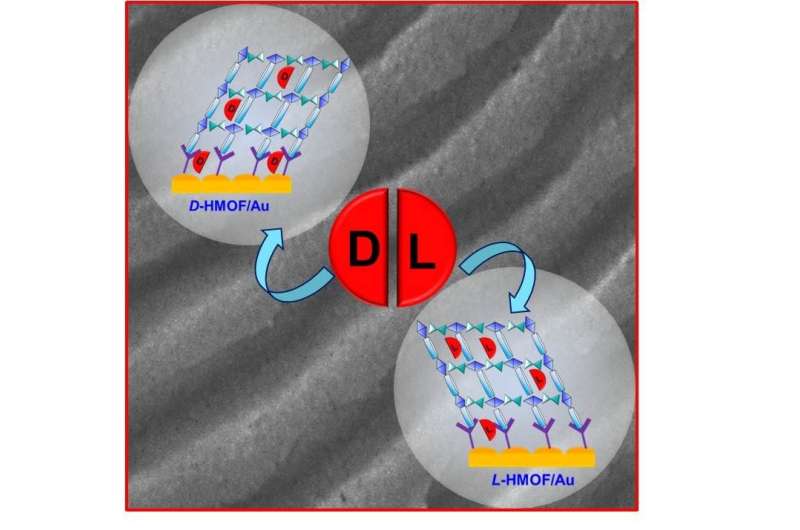Credit: Tomsk Polytechnic University (TPU)
Researchers of Tomsk Polytechnic University with colleagues from the Czech Republic have developed supersensitive sensors for detecting enantiomers, known as "mirror molecules," in drugs. These molecules can reduce drug effectiveness or even be harmful to humans. Experiments revealed that the developed sensors have high sensitivity compared to traditional methods. They use organometallic frameworks as traps for enantiomers. The studies are published in Applied Materials Today.
Enantiomers are molecules with a similar formula and physical properties, but they have different rotation directions of polarized light. Therefore, they are like mirror images of each other. Due to this characteristic, enantiomers can result in certain biological effects.
Co-author Olga Guselnikova, a group of associate professor Pavel Postnikov, says, "These are chiral molecules, most of which are part of medicinal substances. Their presence is strictly regulated. The medicine should either not contain enantiomers at all, or their concentration should not be harmful to health. So there should be methods to quickly and efficiently detect enantiomers.The current detection methods include electrochemical techniques and chromatography. Their detection limit usually does not exceed 10-8 mol per liter. Our sensors demonstrated a detection limit of up to 10-18, i.e., they are 10 orders of magnitude more sensitive. Moreover, chromatography is an expensive method."
The sensor is a thin gold plate with a wavy surface. The team has used such plates in other studies. Now, the researchers have succeeded in grating organometallic frameworks consisting of zinc ions and organic elements. This is a porous structure that catches the targeted substances. It is possible due to the correctly selected pore size in the framework and the similar chemical nature of the compounds that need to be caught.
In particular, the researchers conducted experiments with the framework that included lactic acid. It is optically active, so the organometallic frameworks based on its enantiomers can be a trap for other optically active substances. This sensor construction was tested on an antiparkinson drug and a number of amino acids.
It is enough to drip a solution of the analyzed substance onto the plate. Further analysis can be carried out using a portable Raman spectrometer, which takes less than five minutes.
"Our sensor amplifies the signal for the spectrometer simultaneously by two methods. It is a significant element of this study. On the one hand, the signal is physically amplified due to the effect of surface plasmon resonance generated by the gold plate. On the other hand, our organometallic frames amplify the signal chemically. We were one of the first to demonstrate a sensory system combining two amplifying methods of the Raman signal," the researcher notes.
According to Dr. Guselnikova, these sensors can be used both to control the quality of drugs and environmental monitoring, i.e., to detect contaminants in water and soil.
More information: O. Guselnikova et al. Homochiral metal-organic frameworks functionalized SERS substrate for atto-molar enantio-selective detection, Applied Materials Today (2020). DOI: 10.1016/j.apmt.2020.100666
Provided by Tomsk Polytechnic University
























